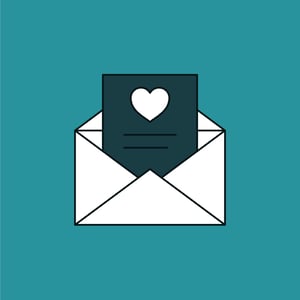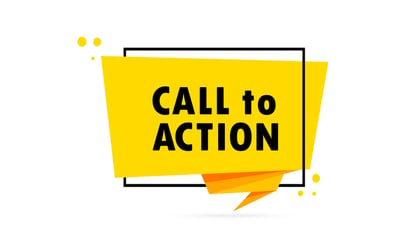

J&C Blog
Find all the latest marketing trends on the J&C Blog.

Find all the latest marketing trends on the J&C Blog.

Insurance companies know risk.
But do you know the best way to attract and convert prospective policyholders?
If you follow a few important guidelines, your best, most effective, and most profitable channel could be direct marketing.
With direct marketing, you can track your campaign down to the penny. It’s cost-effective, and it connects with the exact group of consumers you want to reach. You're saying, yeah, but it's 2022 and everything is online? Did you know that 98% of consumers bring in their mail the day it is delivered, and 77% sort through it immediately (Source: Deliver Magazine)? And when you compare that to the second or two they spend looking at an email or banner ad, it's even more impressive.
But to get the best response, the best results, and the best ROI from your direct mail campaign, you need to follow a few important steps.
follow a few important steps.
One of the most critical factors for your direct mail success is reaching the right people. That means using the right lists. There’s an equation in direct marketing that says your overall success depends 40% on your list, 40% on your offer, and 20% on your creative. In order to build the best possible package, you need to nail all three.
But your audience is arguably the biggest factor in this marketing equation. Before you do anything else, you need to decide who your message is intended for. Who is your ideal target audience? Who does your product/service benefit most? A common direct mail marketing mistake is when companies cast the net too broadly. As a result, their message misses the mark with many recipients and ultimately is relevant to fewer readers.
Direct Marketing Equation for Success
40% List, 40% Offer, 20% Creative
To help prevent this, you'll want to have a clear picture of your ideal target. Many companies will create a “persona” to clarify just who that is. But make sure this “person” aligns with your goals, so everything remains focused throughout the process.
You'll also want to use your persona to help you determine the best language to use. If your target is highly educated and knowledgeable about the topic, then you can use more elevated language.
If you’re trying to reach consumers about a well-known product, on a more personal level, then you'll want to use more conversational language.
That said, every bit of copy within your package should be carefully tailored to the reader, in terms they understand and that will speak to a specific need they have. Then, you need to give them a clear path to action. Make it easy for them to reply.
2. Personalize Your PackageWith the amount of data, the number of list sources, and tons of technology available today, consumers not only appreciate relevant personalization, they’ve come to expect it. And one of the more exciting advances at your disposal today is variable data printing.
This type of printing allows for personalization at scale. You can create a personalized relevant package, one that’s virtually unique to each recipient. Addressing people by name shows them you know who they are. And when you use relevant data to drive your message, you can speak to them about what’s important to them and their lives — what challenges are they having right now (have they just moved? Had a baby? Bought a car? Etc.) and how your product/service solves that problem. Add a few images that help support your message or illustrate your product’s benefits — along with an offer that’s valuable — and you’re sure to connect with your reader.
 Ok, now you’re ready to craft your message. But you’re staring at a blank page/screen.
Ok, now you’re ready to craft your message. But you’re staring at a blank page/screen.
Where to start????
Well, many writers will start with the 5 W's. This helps you target your message and speak directly to the people it will resonate with.
The 5 W’s typically look something like this:
And please know, your call to action is virtually useless if you don't make it obvious how to take action. If you tell them to "buy it now" and then bury the web address on the back page, they aren't going to take the initiative to go find it on their own.
Therefore, you need to clearly, boldly, and repeatedly state how they can get your services in an easy and friction-free way.
3. Don't be Afraid to Promote Your BrandEven though you've acquired a highly targeted list, not everyone on your list will be in the market for a new insurance policy right now. But “now” is the operative word here. If you can create some awareness of your brand – without compromising the sales message or call-to-action, you can plant a seed in the reader’s mind so that your company has better recall when they ARE in the market for the type of product you provide.
4. Devote More Budget to Direct
With the popularity of digital, email, and social media, many insurance companies neglect the tried-and-true channel of direct mail to drive leads. And sure, when it’s done well, digital, programmatic, and social advertising can be successful. But those channels are so saturated these days that direct mail can be just the thing that stands out to your ideal prospect. This is especially true of Millennials who are now in a stage of life where insurance products are important. And while Millennials may always seem to be on their phone or social media, they also report an affinity for direct mail. In fact, ExactTarget’s Channel Preference Study found more than half (57%) of young people have made a purchase as a result of a direct mail offer.” (Source: insurancejournal.com) 
And “The 2012 Channel Preference Study for Both the Mobile and Non-Mobile Consumer” from Epsilon shows that 62 percent of Americans actually enjoy checking their physical mailbox, with 73 percent of U.S. consumers saying they prefer direct mail for brand communications because they can read the information at their convenience.
Also, a full 79% of potential customers say they would act on direct mail immediately according to Direct Marketing Association (DMA) research.
In short, direct mail connects. It’s physical and that’s an advantage over digital channels. And that's why it warrants a bigger slice of your budget.
5. Outline Your Marketing Goals
At this point, you want to be sure your message or format, aligns with your defined direct mail campaign goals. By mapping out what you hope to accomplish, you can refine your message, target audience, and other creative.
Examples of some campaign goals include:
How Much Does Direct Mail Cost?
Again, people like to physically interact with a piece of mail, which is why digital tactics haven't completely overtaken direct mail marketing. But, with paper shortages, supply chain issues, and runaway inflation, cost does need to be considered.
 The overall cost of direct mail marketing depends on many factors, including:
The overall cost of direct mail marketing depends on many factors, including:
On average, companies will spend anywhere from $.50 to as much as $3.00 or more per piece on a direct mail campaign.
Just beware, if you take the cheapest, blandest route, when people will see your piece in their mailbox, they may not take it seriously. If it doesn't look important, valuable or useful, it will quickly find its way to the recycle bin. But adding all the bells and whistles to catch their eye can be expensive.
So when you’re preparing your direct mail marketing budget, you want to consider:
What type of piece are you want to send – a postcard, self-mailer, full letter package, dimensional piece, etc.) The full letter package is a pricier option for direct mail, but it can be extremely effective, considering full packages typically include:
In the U.S. today, there are roughly 6,000 insurance companies. And for the most part, they're all selling the same thing. So how do you get readers to pay attention to your message?
What you need to do is describe your product in a unique and relevant way that sets it apart from the hundreds of other products just like it. Again, this is where a professional creative marketing team can really make a difference.
Start by recognizing the customer's genuine need for the product and then describe how you can fill that need better than anyone else. Once this is established, you can continue to the next point of "why."
Why Should They Purchase It?
You'll want to clearly describe the benefits your product provides as quickly and simply as possible. The longer it takes the reader to get to the "what's in it for me" in your content, the more likely they will give up on it. You have about 3-5 seconds from the time the reader opens your package to grab their attention and present an attractive, relevant, time-sensitive offer.
When Do They Need to Act?
Now! A call to action is one of the most important elements of your direct mail content because it lets the reader know exactly how (and when) to get your product.
This is typically placed at the beginning of your letter, again in the middle, and then once more at the end of the letter, plus several more times throughout the package. That way the reader will know how to respond no matter where they happen to be in the package.
Many insurance companies will provide some sort of incentive to help encourage readers to act — like providing a limited -time discount or offering a free service, such as a consultation, before purchasing the actual product.
-time discount or offering a free service, such as a consultation, before purchasing the actual product.
The call to action doesn't always have to focus on buying the product. Although CTAs like "buy now and save 25%" can certainly be effective, it's sometimes more beneficial to convince the reader to contact your team for further questions or explanation.
This way, your licensed insurance agents can use their expertise to help eliminate any doubts the prospect might have.
What Should It Look Like?
Direct mail doesn't always have to be the classic stamped letter format, although that's what traditionally works best. But the fact is, there are several other formats your company can choose that might be effective depending on who the target is, the content of your message, and what your offer is.
Again, with the paper shortage, supply chain issues, and runaway inflation we're seeing these days, many marketers are trying oversized postcards. They can work very well if you simply want to make people aware of your product and drive them to a website for the details (or an 800 number to speak with a live rep).
There are even self-mailer formats that fold twice (giving you three panels) and have a tapered back flap that looks like an envelope.
And honestly, there are dozens of other formats you can try that aren’t full envelope packages. But remember, the letter package is the one that gets opened most and taken most seriously and gives you the best results. Using a self-mailer or postcard alone can have a negative affect your overall response rate.
Yeah, it’s a lot to think through and there are many moving parts. One wrong move could derail your whole campaign. Or you may set everything up exactly right and trip on the creative. Either way, your results will be flat you'll have wasted lots of time, energy, and money.
That’s why your best move is to consider using a professional direct marketing agency like Jacobs & Clevenger. For over 40 years, blue chip insurance clients from coast-to-coast have trusted us to create powerful direct mail packages that performs for them and helps them hit their goals.
Let us do the same for you. Contact J&C today. That way, we can give you an honest assessment of how direct mail can work for you.
Topics: Direct Marketing, Direct Mail, Creative
303 E Wacker Drive, Suite 2030
Chicago, IL 60601
Phone: 312-894-3000
Fax: 312-894-3005